Sometimes I wonder what it would be like if people had to shed their skin like insects, spiders, and other arthropods do. I like to imagine the social implications of the process. For one, there would be people-shaped husks everywhere… “I’m shedding,” would be a legitimate reason for missing class or taking off from work… And heaven forbid somebody move too quickly after molting.
Perhaps I think about this kind of thing too often.
ANYWAY. After a particularly frustrating night of trying to photograph small wasps suspended in ethanol (for which I have nothing to show), I went home defeated. But I wasn’t too upset when I walked into my room to see this:
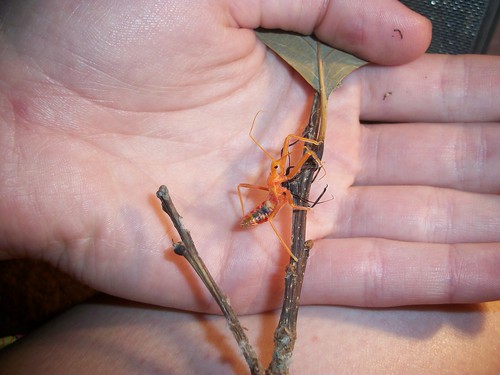
After several days of inactivity with me clucking over him worriedly, Roger finally shed!
Insects do not possess the same skeletal system that we’ve come to enjoy as people. Rather, they possess a hardened cuticle composed of chitin called an exoskeleton. The exoskeleton helps them withstand the effects of gravity and dessication, but there is a slight draw back in this kind of living when it comes to growth. As humans, we are constantly shedding skin as we grow, leaving a DNA trail wherever we walk. While our disposal of old skin has some big results, we hardly seem to notice as it’s happening. Insects on the other hand can’t shed their skin cells, but have to molt out of their entire “skeleton” in order to grow properly via a process called “ecdysis”.
A successful molt starts off with fasting and inactivity, called apolysis. During this time, the insect/arthropod begins to separate its body from it’s old epidermal cells by manipulating hormone levels and initiating enzymatic processes. After a successful separation, the creature is still trapped within its old skin. It begins to build a new layer of cuticle, while dissolving the old cuticle with enzymes, namely ecdysone. When the time is right, the arthropod will begin to shuffle about in its skin-prison and break free through a crack in its old armour.
If this is kinda hard to grasp, it would be similar to the sections of an orange pulling away from the rind… only for the orange to grow a new rind and bust out of the old one. The end result would be a bigger orange, and fascinated horror from onlookers.
When an insect emerges from their exoskeleton, or “exuvium, ” as it is now called, they are very vulnerable and squishy. This presents a problem until the new cuticle hardens. Oftentimes, newly molted insects are a different, fun color–hence good ole Roger trading his distinguished sombre black for festive orange, yellow, and red.
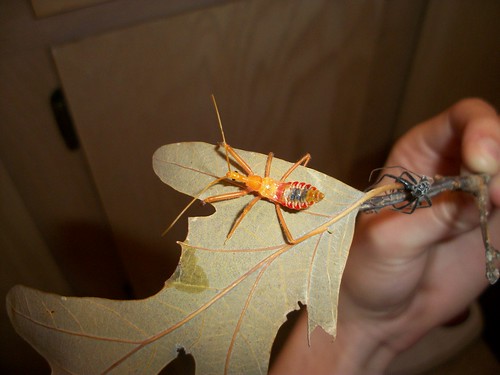
An insect in this defenseless position needs to make sure that it does not draw predatory attention to itself, or harden in an odd position, lest it jeopardize its chances of a successful molt the next time it needs to grow. That’s what happened to one of my katydids- his legs hardened in a strange position after a molt (he looked like a bowlegged cowboy). He was able to live just fine until he needed to shed again. Then he died.
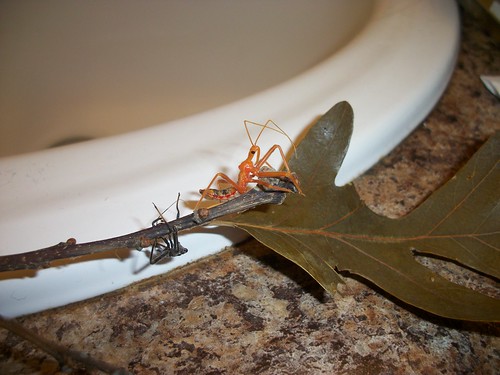
After some time passes, the new cuticle will harden and darken and the arthropod will be able to return to normal functions, like moving around, eating, and other arthropod activities (playing in detritus, flying into windshields, congregating at sodium vapour-lamps, etc.).
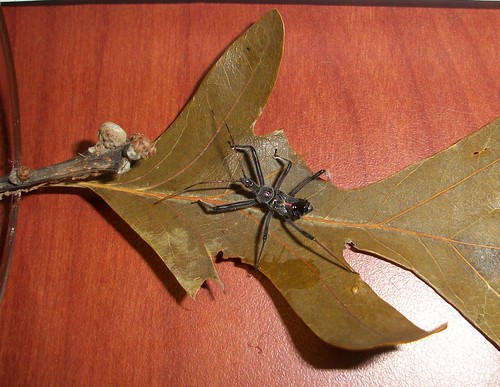
I’d like to think that Roger would use this as his profile photo on the facebook. Mostly because I’m sure he’s pretty fun-loving once you get past his brutal way of eating.
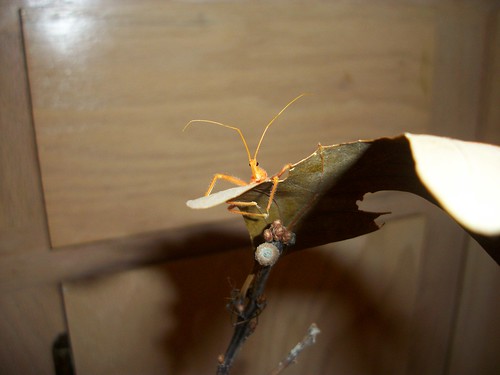
On a final note, here’s my favorite picture of Roger glowing like the little angel he is. How precious!
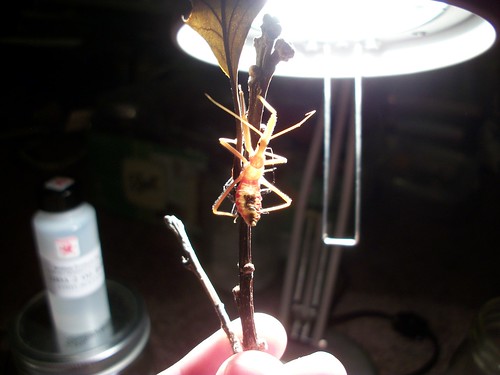
What’s the deal with “exuviae” anyway? I mean, as a term, why was it only plural for so long, and we had to derive exuvia as a singular (apparently)? Seems like some sort of unnecessarily complex story here.
Hey~I ‘m a high school student and am designing this experiment to be carried to space~so could you tell me WHY most insect hang themselves up side down when they go through ecdysis? What are the mechanisms behind this
Thanks a lot~
Hi Anna,
Great question! I’m not sure that insects are always upside down when they molt, though I do suspect that position would allow gravity to assist in the process of leaving the exuvia (necessary, maybe, since the new cuticle is too soft to allow for fine-scale movement?). Seems like a good system for science. My hypothesis: Insects need gravity to help them properly molt. Now to develop an experiment …